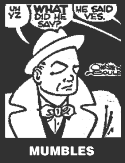Once upon a time, there was a giant who was fond of strolling the shore of his island each morning as the sun rose. One morning as he strolled he wondered how long his stroll was and asked his fairy godmother how far it was around his island. His fairy godmother gave him a magic, kilometer-long measuring stick and told him to measure it himself.
When he had done this, he went back to his fairy godmother and she gave him a magic, meter-long stick, and told him to measure it again. When he had done this, he was given a magic, millimeter-long stick and told to measure one last time.
Because the sticks were magic, they were ultimately precise and his measurements ultimately accurate; no errors or tolerances to worry about. However the giant found he recorded a longer distance as the sticks got shorter.
Being of a philosophical bent, the giant sat on a large boulder and thought about why. The creatures of the giant's island went about their lifes, tides waxed and waned, the sun sped its daily course across the heavens, seasons came and went, tectonic plates drifted about the planet like the skin on hot milk and the giant's ponderous ponderings finally came to a conclusion.
He decided that each stick, although magic, did not measure the distance absolutely, rather they averaged out the "wiggliness"of his island's coastline at its (the stick's) particular scale. So the giant's first stick ignored any coastal feature less the a kilometer in dimension and similarly for the other two measurements at their dimension.
The giant decided if he wanted to absolutely know how far he walked he would have to ask his fairy godmother to make his coastline conform to a formula from which the distance could be calculated. He also thought that it would be interesting for his island to have a coastline that was so "wiggly" that it would occupy all space but still have its present finite area.
However, deciding he liked his island just as it was, he returned the measuring sticks to his fairy godmother, thanked her for an excellent think, and wandered off down the tideline as the fairy godmother followed his meanderings with a gentle smile.






